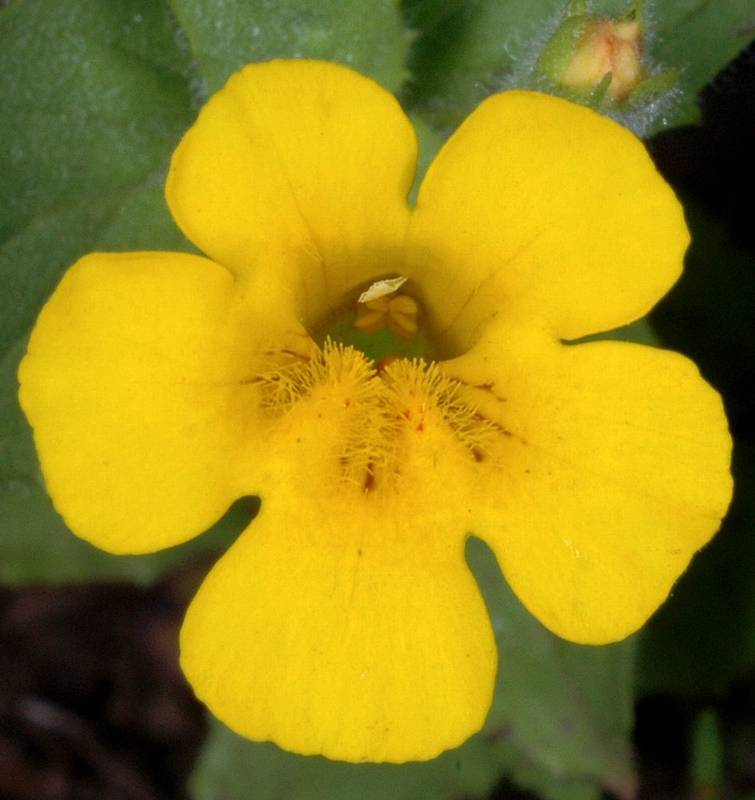Erythranthe grandis
Erythranthe moniliformis
large monkey-flower
Leaves basal and cauline, basal leaves generally not persistent;
petioles 10-80 mm, becoming reduced distally;
blade ovate to broadly elliptic, 25-60 mm long and 20-40 cm broad, palmate or nearly pinnate venation with 5-7 veins, base truncate to nearly cruneate to nearly cordate, margins crenulate to toothed, occasionally sublyrate near base, apex rounded to obtuse, surfaces of distalmost leaves hairy as stems.
Leaves opposite, remotely toothed, pinnately veined, sessile or short-petiolate, the blade ovate to elliptic-ovate, 1-8 cm. long and 7-35 mm. wide.
Inflorescence racemose, bracteate, flowers 8-26; fruiting pedicels 10-35 mm, hairy as stems;
calyx straight-erect or nodding at 45-100 degrees, ovate to bell-shaped, inflated, compressed along sagittal plane, 15-22 mm, hairy as stems, throat closing;
corollas yellow with red spots inside, symmetric bilaterally, bilabiate;
tube-throat widely funnel-shaped, 16-24 mm, protruding 10-15 mm beyond calyx margin, limb widely expanded;
styles hirtellous;
anthers not protruding, glabrous.
Flowers solitary in the leaf axils on long pedicels;
calyx 7-13 mm. long, viscid-villous, especially on the 5 rib angles, the 5 teeth pointed, 2-4 mm. long, the upper tooth a little larger than the others;
corolla 1.5-3 cm. long, yellow, often with some dark lines or dots, only slightly bilabiate, the tube nearly cylindrical;
stamens 4.
Capsules 8-12 mm, included.
Capsule.
Erythranthe grandis
Erythranthe moniliformis
- Local floras:
CA,
OR,
WA
- Local Web sites:
CalFlora,
CalPhotos,
Flora NW,
PNW Herbaria
WildflowerSearch
iNaturalist (observations)
- LBJ Wildflower Center
- SEINet
- Plants of the World Online
- Encyclopedia of Life
- Wikipedia
- Google Image Search
- Local floras:
BC,
CA,
OR,
WA
- Local Web sites:
CalFlora,
CalPhotos,
Flora NW,
PNW Herbaria
WildflowerSearch
iNaturalist (observations)
- LBJ Wildflower Center
- SEINet
- Plants of the World Online
- Encyclopedia of Life
- Wikipedia
- Google Image Search



